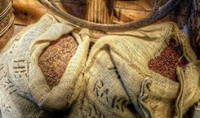The most expensive coffees on earth:
Read our little summary about the most expensive coffees in the world.
1. Black Ivory coffee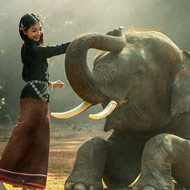 With a price per kilo of around USD 3000, "Black Ivory" coffee stands as the pinnacle of luxury coffee, surpassing even "Kopi Luwak" in exclusivity and price. Produced in the Anantara resorts in the Maldives and Thailand, this rare coffee involves nearly 30 elephants that consume Thai Arabica coffee beans. The beans undergo a natural fermentation process in the elephants' digestive system, breaking down the proteins in the beans and yielding a coffee with reduced bitterness and a smooth, chocolatey, and slightly nutty flavor, with hints of red berries.
With a price per kilo of around USD 3000, "Black Ivory" coffee stands as the pinnacle of luxury coffee, surpassing even "Kopi Luwak" in exclusivity and price. Produced in the Anantara resorts in the Maldives and Thailand, this rare coffee involves nearly 30 elephants that consume Thai Arabica coffee beans. The beans undergo a natural fermentation process in the elephants' digestive system, breaking down the proteins in the beans and yielding a coffee with reduced bitterness and a smooth, chocolatey, and slightly nutty flavor, with hints of red berries.
Really true, even if it is hard to believe, elephants have to eat about 35 kilos of coffee cherries so that one can then produce just under a kilo of coffee beans. This kilo is then handpicked from the elephants' dung so that it can be sun-dried afterwards. As you can easily see, this process is enormously costly, which makes the price of the coffee so high.
Black Ivory Coffee is not just about the unique taste; it's a blend of luxury and sustainability. A significant portion of the proceeds from the sale of this coffee is donated to the Golden Triangle Asian Elephant Foundation, supporting both the majestic animals that help create this exquisite coffee and the families that care for them.
Due to its intricate production process and limited availability, with an approximate allocation of 225 kg per year, Black Ivory Coffee is reserved for select clientele, emphasizing the brand's commitment to quality over quantity. Whether you're a coffee aficionado or a seeker of rare experiences, Black Ivory Coffee offers an unparalleled taste experience while contributing to a noble cause.
For those looking to indulge in the world's rarest and most exclusive coffee, a 1 kg package of Black Ivory Coffee is priced at USD 3000. This pricing reflects not only the coffee's rarity and unique production process but also the brand's commitment to elephant welfare and sustainable luxury.
2. Misha Coffee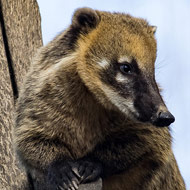 Misha coffee is derived from the name of the animal species "Mishashos". These are rodents that we call coatis in Germany.
Misha coffee is derived from the name of the animal species "Mishashos". These are rodents that we call coatis in Germany.
The origin of the coffee is similar to "Kopi Luwak" or "Black Ivory", where the coffee cherries are eaten by the coatis and only partially digested and excreted.
The following happens in the stomach: The coffee beans meet previously eaten fruits such as pineapples or papayas in the stomach, which can be found in the coffee flavor.
The excrements of these animals are therefore very popular and are collected by the farmers on site and roasted at almost 220 degrees, so that all bacteria and residues are also cleaned.
Finished packaged, these exclusive coffee beans are then shipped mainly to the USA, Europe and the United Emirates, for which the buyers pay up to 1400 euros per kilo.
3. Kopi Luwak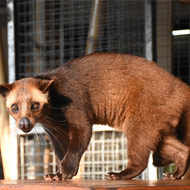 The "cat coffee" Kopi Luwak is traded at a price per kilo of between 800 and 1,200 euros. The special thing about it is that the coffee beans are fed to so-called nocturnal creeping cats, which excrete the coffee again. In the cat's intestines, the coffee beans are exposed to enzymes that make the taste of the beans individual and unique.
The "cat coffee" Kopi Luwak is traded at a price per kilo of between 800 and 1,200 euros. The special thing about it is that the coffee beans are fed to so-called nocturnal creeping cats, which excrete the coffee again. In the cat's intestines, the coffee beans are exposed to enzymes that make the taste of the beans individual and unique.
The taste is described as "mild, syrup-like, rich, earthy and chocolaty." Compared to dry-processed coffees, these coffee beans contain less acidity.
A kilogram of unroasted Kopi Luwak can be purchased for just under 50 euros in the provincial capital of Medan (in North Sumatra). When roasted, it costs around 75 euros. In Europe, this coffee is then offered in the roasted state from 230 euros per kilogram (as of 2013).
Many locals have been tempted by the high prices and therefore began to catch the creeping cats and feed them with the coffee cherries. According to the animal welfare organization, several tens of thousands of animals are now kept in cages in extremely confined spaces.
4. Excelsa Coffee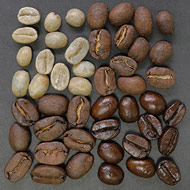 The "Excelsa" coffee beans are a special coffee variety, which is considered a rarity. In 1904, the beans were first discovered at Lake Chad in Central Africa. The coffee beans are similar in size to the Robusta beans, but the strong plants grow up to 20 meters high and are particularly resistant and robust.
The "Excelsa" coffee beans are a special coffee variety, which is considered a rarity. In 1904, the beans were first discovered at Lake Chad in Central Africa. The coffee beans are similar in size to the Robusta beans, but the strong plants grow up to 20 meters high and are particularly resistant and robust.
The plant thrives very well in particularly dry areas, which is why it has a very strong and earthy flavor.
The ripening period of the plant lasts almost 12-14 months, which is very long in contrast to other coffee plants. Today, Excelsa coffee is mostly produced in Chad and accounts for only 1% of the total world coffee production.
The taste of the Excelsa bean is described as extremely "strong" and takes some getting used to, which is why the bean is fairly unknown. To neutralize the taste of the bean, the Excelsa bean is often mixed with other coffee beans.
The price per kilo is nowadays estimated at about 200 euros.
5. Jamaika Blue Mountain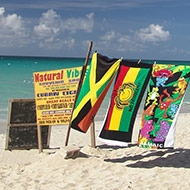 Jamaica Blue Mountain is coffee beans of the Arabica variety, which originate in the "Blue Mountains" of the same name in Jamaica.
Jamaica Blue Mountain is coffee beans of the Arabica variety, which originate in the "Blue Mountains" of the same name in Jamaica.
To be certified as "Jamaica Blue Mountain", the coffee must be grown between 550 and 1700 meters above sea level, which makes the coffee so special!
Due to the high humidity of the climate, winds from the coast rise to the mountains, where a meeting with the cool air takes place, resulting in dense fog.
The resulting low translucency of the sun slows down the development of the coffee beans, which surprisingly adds a special touch to the aroma and flavor of the beans.
Due to the difficult conditions, it is only possible to grow this coffee to a limited extent, which makes Jamaica Blue Mountain one of the top classes of the most expensive coffee. To taste the flavor of Jamaica Blue Mountain, nowadays you have to pay up to 150 euros for a kilo.
6. St. Helena Coffee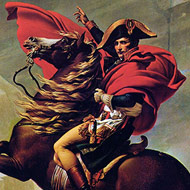 The history of coffee began in 1733 when the East India Company brought coffee seeds from the port of Mocha in Yemen to the island of St. Helena. The distance from the African mainland to St. Helena is about 1900 km. Due to the volcanic origin of the island and the mild climate, the conditions for growing coffee were ideal.
The history of coffee began in 1733 when the East India Company brought coffee seeds from the port of Mocha in Yemen to the island of St. Helena. The distance from the African mainland to St. Helena is about 1900 km. Due to the volcanic origin of the island and the mild climate, the conditions for growing coffee were ideal.
The island is known to coffee drinkers as the exile of Napoleon Bonaparte. Since the island is just 15 km long and 11 km wide, the growing conditions are limited, which makes St. Helena coffee so rare and special. The cultivation and processing of the coffee are exclusively done by hand and according to organic principles.
In 1839, the London coffee trading agency W.Bumie & Co. described it as the world's best coffee. Towards the end of the 19th century the cultivation of the coffee was stopped, because the main customer at that time changed to nylon yarn and rubber bands. In 1994, cultivation was resumed by David Henry a Londoner from St. Helena. In 2008 David Henry left the island and two years later coffee production was restarted by a joint venture.
The taste of the coffee is perceptible of hazelnut, chocolate and almond notes. The acidity of the coffee is therefore inconspicuous and subtle. The hand-picked coffee is sold between 150 and 200 euros per kilo.
7. Hawaii Kona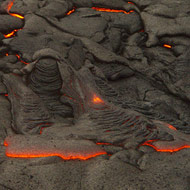 Among the top 5 most expensive coffees is Hawaiian Kona coffee, which comes from the state of Hawaii in the United States. Most of the Hawaiian islands have a volcanic origin and therefore the humid mild climate offers an excellent opportunity to grow coffee beans.
Among the top 5 most expensive coffees is Hawaiian Kona coffee, which comes from the state of Hawaii in the United States. Most of the Hawaiian islands have a volcanic origin and therefore the humid mild climate offers an excellent opportunity to grow coffee beans.
The "Kona Coffee Belt" is about 30 km long and 3 km wide. It is located in the west of Big Island on volcanic slopes from 250 to 850 meters above sea level. The soil is particularly fertile, on which the demanding Arabica beans grow especially well. The process of harvesting begins as early as spring with the snow. The phenomenon known as "Kona Snow" is completed in April with the green coffee berries. In August, the full red coffee cherries are picked and washed by hand.
The cultivation of the land, the wages of the workers and the required equipment are definitely more expensive in Hawaii than for example in Africa or India. Many needed materials have to be shipped, which makes the price of the coffee so expensive.
Kona coffee, in addition to the high cultivation prices, is also very rare and exceptional. The coffee cultivation in Hawaii is just under 3300 tons annually. Brazil produces for comparison, almost 1000 times as much.
Coffee connoisseurs define the taste as smooth, full-bodied, with notes of chocolate, caramel, cinnamon and berries. For a kilo of Hawaiian Kona coffee, you pay about 100 euros in Germany.
8. Geisha Coffee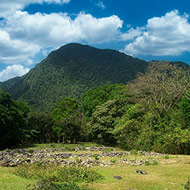 The origin of the Geisha coffee beans is Ethiopia, they were introduced only in the early 1960s in Panama, where they grow up more and more today. Compared to other plants, Geisha plants have fewer leaves, thinner branches and fewer fruits. In addition, it was discovered at that time that the plant is very susceptible to pests.
The origin of the Geisha coffee beans is Ethiopia, they were introduced only in the early 1960s in Panama, where they grow up more and more today. Compared to other plants, Geisha plants have fewer leaves, thinner branches and fewer fruits. In addition, it was discovered at that time that the plant is very susceptible to pests.
After a long time, it was discovered that the great taste comes out when the plants are grown from an altitude of 1600 meters. Why the Geisha beans develop a much better flavor at this altitude is still unclear.
In terms of taste, it is said that the beans contain a note of bergamot and yasmine. If you are very sensitive to taste, you can even pick out a sweet aroma of berries, citrus and mango.
In an auction in 2010, the equivalent of 380 euros was paid for a kilo of unroasted Geisha beans. Nowadays, a kilo costs about 80 euros.

